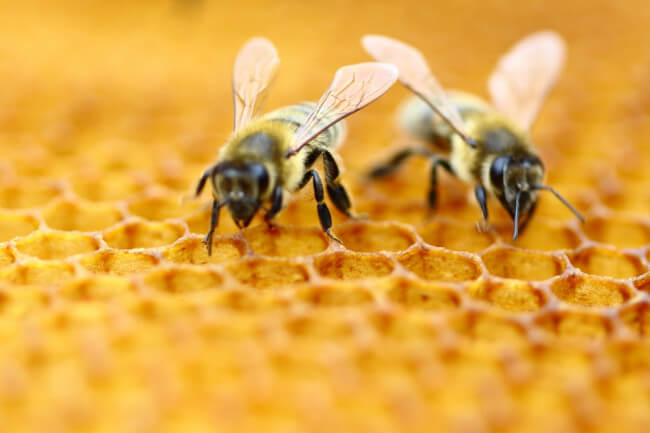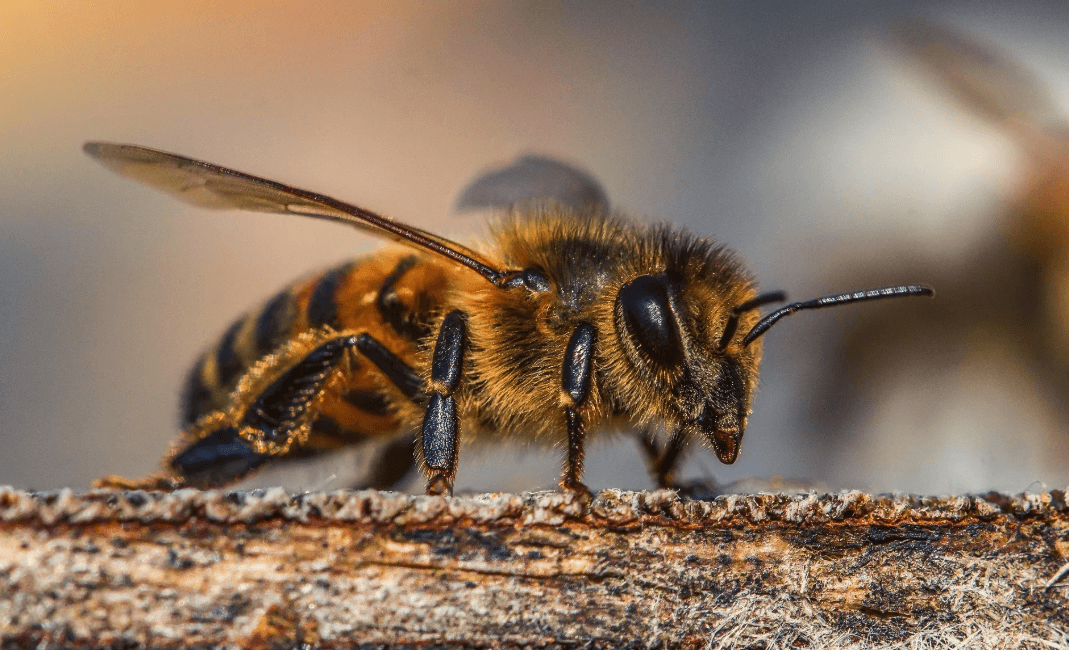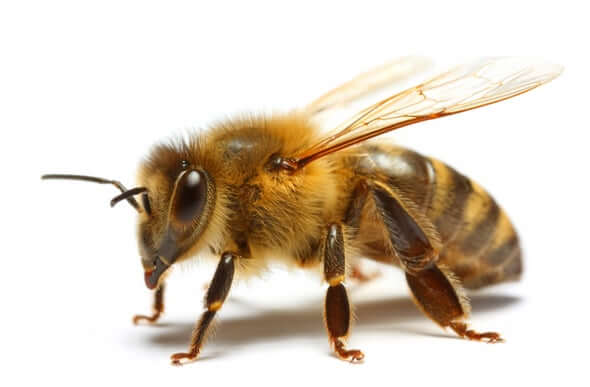The honey bee is classified under the class Insecta, family Apidae, and order Hymenoptera. Honey bees are the most common species of insects and are found all over the world. Honey bees are one of the best pollinators of crops, wild plants etc. They are the only insects which provide several benefits to humans.
Honey Bee Facts and information
- Honey bees live in hives. There are usually three members in the hive i.e. queens, workers and drones
- Honey bees are small in size and are available in wide varieties of color. Honey bees are involved in the production of honey which is now available worldwide
- Honey bees travel with a decent speed of 15 miles per hour in search of nectar or pollen
- Honey bees gather nectar from 2 million flowers to make 1 pound of honey
- They communicate with each other by dancing called as waggle dance
- Honey bees are brilliant boogies; they share information about best food sources through waggle dance.
- Male honey bees called drones don’t work neither they have sting but only thing they do is mate

Honey Bee Diet
Honey bees are herbivores and usually feed on plants and fruits. They prefer to feed on sweeter plants which produce nectar, fruits, pollen or even honey. Most honey bee larvae consume honey, except those selected to become future queens.
Larva who is chosen to become future queen usually feed on royal jelly. Royal jelly is a white secretion which is produced by female worker bees. Royal jelly comprises of protein, fertility stimulants and several vitamins.
Also read:
Honey Bee Habitat
Honey bees are found all over the world and prefer to live in tropical climate and forested areas. Apart from this, they also prefer to live in woodlands, gardens, trees, and other areas where there is greenery or area surrounded by plants and flowers. Honey bees build their hives inside the trees or at the bark of trees.
European honey bees prefer to live in temperate regions as they store large amount of honey as compared to others and have to maintain their body temperature.

Honey Bee Behavior
Behavior of honey bee is quite similar to that of other members of class insecta. Honey bees have a very special camouflage technique as they use their stings to attack on the predator or intruder. However honey bees can use their stings only once. When they attack the intruder the stings usually detach from their body. Honey bees forage for food in group.
They can survive without hunt or search for food for a long period of time as they feed on the food reserves and compacted masses during winters. Honey bees perform a dance which is the way for their communication. They usually use this dance to warn other bees about danger or predators.
Lifestyle
Life of honey bee’s colony is perennial. In their hive, there are usually three member’s i.e., queens, workers and drones. Queens generally focus on producing eggs, workers are the non-producing females and drones are the male honey bees whose main duty is to mate with the queen.
Most of the honey bees are diurnal and carry out all their activities during day time while some of the species of honey bees are nocturnal. Worker bees travel up to 6 miles in search of food.
Honey Bee Lifecycle
Drones usually mate with queens for the development of eggs. Lifecycle of honey bee starts with the hatching of egg. Hatching of eggs takes 2-3 days after fertilization or copulation. After the hatching of egg the larva comes out which undergoes several metamorphic changes within their first 20 days.
Queens usually take 16 days to become adult, Drones require 24 days while workers develop in under 21 days. During their development queen constantly feed on the royal jelly while drones and workers fed on royal jelly for few initial days.
Predators
As the size of honey bees is quite small thus they have large number of predators. Birds, rodents, reptiles and insects are the main predators of honey bees. There are some larger mammals that destroy the hives of honey bees. Due to their small size they do not have any special defensive skills. They can only save themselves either by flying or by using their stings.
Breeding
Honey bees usually breed during winter season. Breeding of honey bee fascinate beekeepers all over the world. Beekeeping is usually known as apiculture. This is the phenomena of maintenance of bee colonies. Male drone generally mates with the queen to produce eggs in group.
Fertilized egg hatches and transform into female worker bees while unfertilized eggs transforms into drones or male honey bees. After their birth, they take about 1 month for their development into a mature adult bee.

Appearance
All the species of honey bees are quite similar in appearance. Honey bees usually have a size of 5 to 15 mm. Honey bees have three pairs of legs i.e. six legs. They possess a pair of compound eyes on their head. They also possess wings, six segments of abdomen, antenna and nectar pouch.
Their eyes are usually large, hairy and have an excellent eye sight. Most of the honey bees have three basic colors i.e. brown, yellow and black and may have stripes on their body. Honey bees have segmented type of body.
Honey Bee Lifespan
The lifespan of honey bees varies depending on their role within the hive. Male honey bee or drones have shorter lifespan and dies immediately after mating with queen. Lifespan of worker bees depends upon the amount of work they do. Worker bees usually live for 4 to 6 weeks. Queens have the maximum lifespan, they live for 5 years. Due to high pollution and habitat loss, Honey bee’s population is decreasing rapidly and their lifespan is also declining.
Health Issues
Honey bees may suffer from various health disorders which may results in decrease in their population. Some common diseases which are found in honey bees are varroa mite, bacterial infection, wax moth, fungal disease and acarine mites.
Varroa mite is an external parasite that lives and feed on adult honey bee. Varroa mite affects honey bee by weakening and malformation. Wax moths are the larva which can destroy the beeswax comb and comb honey. Acarine mite is also external parasite which causes breathing problem in honey bees.
Apart from these, honey bees have great importance in the life of human beings. Honey has been the source of food for many years. Consumption of honey can help in preventing diseases like cough, asthma, fever, diarrhea, stomach ulcers etc. Honey can also be used as a source of carbohydrate.
Grooming
Grooming in honey bees generally involves two methods – self grooming and inter bee grooming. Self-grooming is a method of grooming, cleaning and maintaining parts of the body by themselves. Inter bee grooming is generally between bees, one on one or social grooming. In this, grooming takes place by the help of other bees. Grooming usually results in enhancing the health status of honey bees.
Also read:
Shedding
Honey bees usually shed their skin during the larvae or pupae stage. Adult honey bees do not shed their skin. Their skin is surrounded by the waxy layer which protects them from losing water. Their exoskeleton contains chitin which prevents skin from continuous growth.
Honey Bee Characteristics
- Honey bees have been originated from Asia and Europe and are now found in almost all the continents. There are 7 species of honey bees which has been further divided into 44 species.
- Honey bees can be easily identified or recognized from a long distance because of their buzzing sound. Buzzing sound is produced by their wing strokes.
- Honey bees plays an important role in developing and maintaining eco system as it pollinates most of the flowers, plants and crops.






